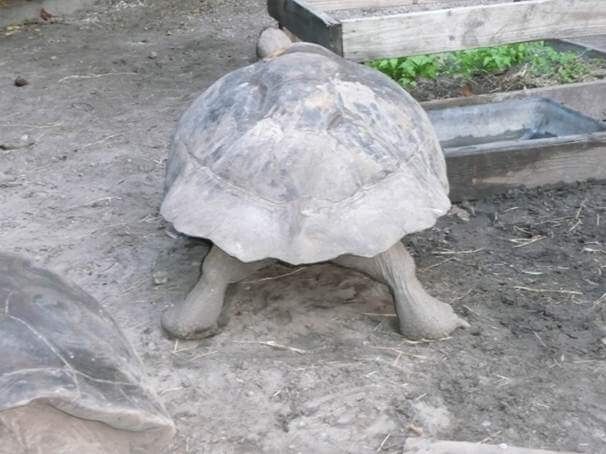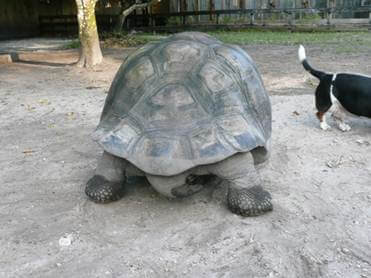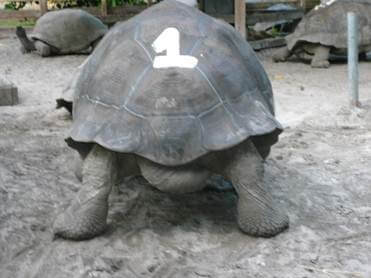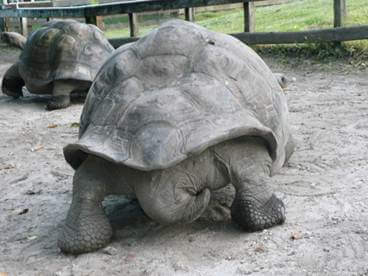Pyramiding Shells
Pyramiding shells isn’t the worst thing you will find when looking at Giant tortoises. I see so many topic’s on pyramiding and I certainly understand the concern.
But what often goes unnoticed are all the leg problems you can have in Giant tortoises. Giant tortoise can have splayed legs (rear legs that flair out instead of being directly under the animal.)
When we see Galapagos and Aldabra tortoise that are old and were not raised in this country you always see an animal that has well developed back legs but unfortunately F2 or second generation animals are very pone to having abnormal legs.
When the animal stands up high look from the back at the position of the rear legs, The pattern looks more like an H then an upside down V you can also look at the pads on their rear feet, if their wearing on the sides of their feet their back legs are splayed. An animal that walks normally will put the entire pad on the ground not just the side.
The two major factors I believe that caused this condition are, lack of proper diet especial low calcium content or calcium phosphorus ratio, and poor exercise. When raising Giant tortoises it is important to give them a terrain to navigate, the biggest mistake people make is trying to raise these animals in a fish tank or terrarium for the first couple of years, by this time there could be a lot of damage done. Another mistake is keeping the pen too small, these giants are active and because of their growth rate they should be doing a lot of walking to develop strong muscles and bones. If your pen size is too small and uninteresting you are not encouraging exercise
You can see in the following image a Galapagos that has slightly splayed legs, draw a line from the middle of her pad on her foot straight through the leg now do the same on the other leg, you will notice that the lines intersect about half way up her shell. Also notice that her hips appear too small for her shell. The legs actually start from a smaller center point. The animal has to place her feet down just under the outside of her shell, this causes the ”upside down V” appearance.
Now notice on the next three images how the back legs are seem to come from a much wider hip formation.
This is much closer to an H formation. Also notice how the pads of the feet sit flat on the ground.




We all like nice smooth shells, but don’t overlook proper hip and leg growth. If you’re buying an animal that is a few years old, how and where that animal was raised is important.
I will post a new topic soon and show some of the Tortoise I have raised over the last 30 years that have perfectly smooth shells and perfect hips.


